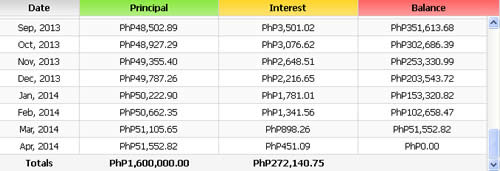You should consider yourself lucky if ever your housing loan application is granted by the Home Development Mutual Fund (or simply Pag-IBIG Fund).
Though it is one of the many benefits available to Pag-IBIG Members, not everyone is privileged enough to qualify for a housing loan.
Getting your housing loan approved simply means…
- The Pag-IBIG Fund is investing greatly on you using the money pooled from the other members of the fund just like you. That’s using the power of leverage.
- You have passed a very strict qualification process which includes the capacity to pay for the housing loan.
- By having your own home, you are helping the country in its nation-building efforts. It is a sign that you are a responsible citizen, too.
But remember this: with your housing loan comes a number of obligations that you have to be responsible for.
And your first responsibility is… TO PAY THE LOAN. When it comes to paying their mortgage, here are the top three stupid things people do that lead them into trouble.
1. Not Knowing Where or How to Pay
This is not so much of an issue if you are an employee in the Philippines and you have arranged a salary-deduction scheme with your employer. After all, they are required by Law to pay a part of your membership contribution (that’s P 100 per month) and remit the whole amount (P 200 in total) to the Pag-IBIG Fund every month (some do it quarterly).
Now, what if salary deduction is not possible? This is the case for many self-employed and OFW members. Well, the surest way is to pay over the counter at the branch where you got the housing loan. You can also pay from companies that are accredited by Pag-IBIG to collect payments for housing loans such as SM Payment Centers, iRemit branches overseas, and branches of Land Bank nationwide. Take however, that the list of accredited companies may change from time to time, so it prudent to check at the Pag-IBIG branch every once in a while. When paying from collecting agencies, always make sure that you keep your Official Receipts or whatever evidence of payment they may issue as proof of the transaction.
(See also: 5 Ways To Pay For Your Pag-IBIG Housing Loan)
2. Not Paying On the Due Date
We recently got a message from a site visitor, which says in part:
“What if i cant continue paying my monthly housing loan? What is the best option to do? Like for example if I have no more work. Can i withdraw my housing loan? if so, can i collect my payments?”

On a positive note: Pag-IBIG sometimes offers rebates to people who pay their housing loans on or before the due date.
Important note to employees: If you are on a salary deduction, always make sure that your employer is remitting the right amount and at the right time. Lapses on their part may put your account at risk.
3. Allowing Foreclosure To Take Place
It only takes 3 consecutive missed payments against your mortgage before your property may be endorsed for foreclosure. If you ever care about your property at all, I’m telling you, don’t ever allow foreclosure to kick in. It’s very expensive in terms of paying the accumulated interest and penalties. It’s also very stressful emotionally. You’d be wise to prevent this from happening first and foremost.
Well, if you are already deep into this problem, I suggest that you contact immediately the Pag-IBIG branch that handles your account and that granted you the housing loan. One of the ways you save your property is to apply for a restructuring of your loan.
(See also: How To Restructure A Housing Loan)
Again, it is worth repeating that a housing loan is a long term commitment and you have an obligation to pay for it. Be responsible.
 Previously, we have discussed the fact that a borrower’s loan amount entitlement is affected primarily by two factors: his income and his contributions. Please refer to that very important article on
Previously, we have discussed the fact that a borrower’s loan amount entitlement is affected primarily by two factors: his income and his contributions. Please refer to that very important article on 
 Do you know someone whose hobby involves collecting some stuff? You know…old coins, postage stamps, vintage cars, and others.
Do you know someone whose hobby involves collecting some stuff? You know…old coins, postage stamps, vintage cars, and others.  For some people, that is enough to spin their heads around and decide against ever using a long term loan. One site visitor was thinking along this line and left a comment this way:
For some people, that is enough to spin their heads around and decide against ever using a long term loan. One site visitor was thinking along this line and left a comment this way: 
